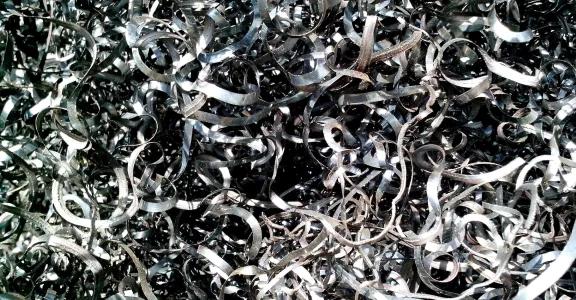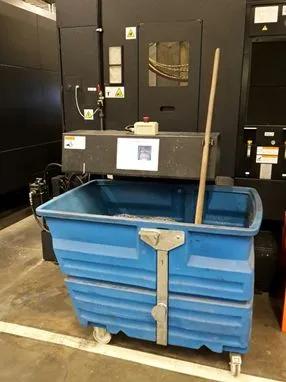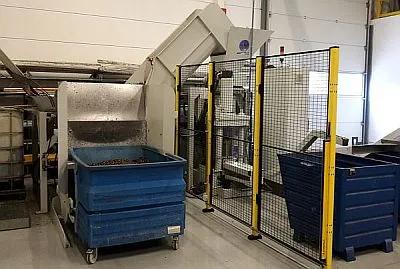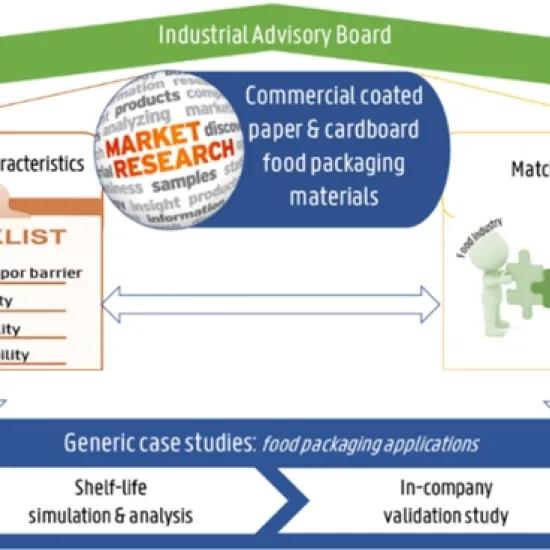The valorisation of metal swarf waste is an underestimated problem; that much became clear at the event ‘How to make money from swarf waste?’ on 14 September. A testimony from BMT Aerospace showed that there are some interesting options.
Waste processing regulations are stricter now and required floors to be impervious, while being equipped with a discharge and carbon hydrogen separation system. Even though this is not (yet) required for production companies, it is recommended to avoid pollution caused by involuntary discharge of emulsions (e.g. due to a leaking waste container). Such involuntary discharges occur in many companies where the swarf is collected, transferred to containers and temporarily stored ... Costs for soil remediation can rise quickly due to all the studies it requires, breaking up floors, taking samples, testing, remediation, installing a new floor and the impact of all this on the operational activities ...
In this context BMT Aerospace gave a very interesting testimony during the event. This West-Vlaanderen-based company chips high-alloyed steel into components for the aviation industry. After the chipping process a whole range of surface treatments are required which often use products in accordance with the requirements of the aviation industry and with a high environmental risk. That is why BMT Aerospace has a solid knowledge of the safety and environmental risks associated with the products used.
Adapted infrastructure
The swarf waste produced by milling processes - about 80,000 kg each year - is collected in driveable, impermeable plastic containers. Since 2014 they are taken to a compacting installation which consists of a leaking system, swarf breaker and briquetting machine. All this installed on a water-proof floor, provided with anti-skid coating to ensure a safe working place. This allows the company to remove swarf correctly with a minimum impact on the environment.
The selection procedure of the installation consisted, among others, of a functional test and this is based on a worst-case scenario (on the basis of the nature and volume of the swarf). This is how the dimensioning was decided. It was necessary to train personnel, with special attention to the importance of the purity of the swarf and avoiding involuntary discharges. The operational management of the machine was assigned to two operators which take ownership of the qualitative swarf processing.
Added value
The investment in the installation is not directly earned back with the higher yield of materials, but the major added value is in a safer, cleaner working environment and most of all, it reduces the risk of involuntary soil pollution to almost zero. In addition, leaks during transport to the scrap processor are avoided, thus reducing the risk of consequential damage.
Pieter Collier, HSE coordinator at BMT Aerospace, shares his learning experience at the event: “Think about internal and external logistics and the possible involuntary emission this can cause. By keeping everything aboveground and, hence, visible, the risk of late detection of possible problems is reduced. That is why we paid extra attention to possible leaks of emulsion like an impermeable floor, an extra anti-skid coating, storage tanks with overfill protection, alarm signals, covered storage ... Additionally, we set up a periodic maintenance plan (5S) and cleaning plan to keep the full installation clean and detect irregularities early on.”
Other specific topics were also revealed at the event which made it clear there is a need for good practical examples. The waste of grinding processes was presented as an issue, for example. The potential of reusing emulsion on the basis of synthetic lubricants requires additional attention. Do you have any questions regarding this topic? Contact us! We are planning a new workshop in the spring to further explore these topics.
This article was written within the framework of the project 'Eco-compliance als competitief wapen’, with the support of Vlaio.






